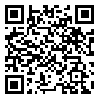Volume 72, Issue 11 (February 2015)
Tehran Univ Med J 2015, 72(11): 780-788 |
Back to browse issues page
Download citation:
BibTeX | RIS | EndNote | Medlars | ProCite | Reference Manager | RefWorks
Send citation to:



BibTeX | RIS | EndNote | Medlars | ProCite | Reference Manager | RefWorks
Send citation to:
Soltan Dallal M M, Motalebi S M, Masoumi Asl H, Rahimi Forushani A, Sharifi Yazdi M K, Rajabi Z et al . Analysis of epidemiological data of foodborne outbreak reported in Iran. Tehran Univ Med J 2015; 72 (11) :780-788
URL: http://tumj.tums.ac.ir/article-1-6507-en.html
URL: http://tumj.tums.ac.ir/article-1-6507-en.html
Mohammad Mehdi Soltan Dallal * 
 1, Samaneh Motalebi Motalebi2
1, Samaneh Motalebi Motalebi2 
 , Hossein Masoumi Asl3
, Hossein Masoumi Asl3 
 , Abbas Rahimi Forushani4
, Abbas Rahimi Forushani4 
 , Mohammad Kazem Sharifi Yazdi5
, Mohammad Kazem Sharifi Yazdi5 
 , Zahra Rajabi6
, Zahra Rajabi6 
 , Nooshin Aghili7
, Nooshin Aghili7 


 1, Samaneh Motalebi Motalebi2
1, Samaneh Motalebi Motalebi2 
 , Hossein Masoumi Asl3
, Hossein Masoumi Asl3 
 , Abbas Rahimi Forushani4
, Abbas Rahimi Forushani4 
 , Mohammad Kazem Sharifi Yazdi5
, Mohammad Kazem Sharifi Yazdi5 
 , Zahra Rajabi6
, Zahra Rajabi6 
 , Nooshin Aghili7
, Nooshin Aghili7 

1- Food Microbiology Research Center, Tehran University of Medical Sciences, Tehran, Iran. Devision of Food Microbiology, Department of Pathobiology, School of Public Health, Tehran University of Medical Sciences, Tehran, Iran. , msoltandallal@gmail.com
2- Devision of Food Microbiology, Department of Pathobiology, School of Public Health, Tehran University of Medical Sciences, Tehran, Iran.
3- Food Microbiology Research Center, Tehran University of Medical Sciences, Tehran, Iran. Center for Communicable Disease Control, Ministry of Health and Medical Education, Tehran, Iran.
4- Department of Epidemiology and Biostatics, School of Public Health, Tehran University of Medical Sciences, Tehran, Iran.
5- Zoonosis Research Centre, Tehran University of Medical Sciences, Tehran, Iran. Department of Medical Laboratory Sciences, School of Para Medicine, Tehran University of Medical Sciences, Tehran, Iran.
6- Food Microbiology Research Center, Tehran University of Medical Sciences, Tehran, Iran.
7- Center for Communicable Disease Control, Ministry of Health and Medical Education, Tehran, Iran.
2- Devision of Food Microbiology, Department of Pathobiology, School of Public Health, Tehran University of Medical Sciences, Tehran, Iran.
3- Food Microbiology Research Center, Tehran University of Medical Sciences, Tehran, Iran. Center for Communicable Disease Control, Ministry of Health and Medical Education, Tehran, Iran.
4- Department of Epidemiology and Biostatics, School of Public Health, Tehran University of Medical Sciences, Tehran, Iran.
5- Zoonosis Research Centre, Tehran University of Medical Sciences, Tehran, Iran. Department of Medical Laboratory Sciences, School of Para Medicine, Tehran University of Medical Sciences, Tehran, Iran.
6- Food Microbiology Research Center, Tehran University of Medical Sciences, Tehran, Iran.
7- Center for Communicable Disease Control, Ministry of Health and Medical Education, Tehran, Iran.
Abstract: (7563 Views)
Background: Diarrhea is the most common bacterial infections, and the main cause of death in the children. Worldwide, food and waterborne diseases are estimated to cause more than two million deaths per year. Foodborne diseases and resistance to antimicrobial agents are two problems worldwide and are increasing. However, standard surveillance systems do not routinely collect information on controls. The aim of this study was to analysis epidemiological data of foodborne outbreaks at the country level.
Methods: This is a descriptive study, in total 305 fecal swab samples from 73 outbreaks during one year from April 2012 to March 2013 in different provinces of Iran, were collected and transferred to the microbiology laboratory of Public Health School of Tehran University of Medical Sciences to identify the cause’s diarrhea. The patterns of antibiotic-resistance were determined by using Kirby Bauer method.
Results: In total 73 food borne outbreaks that were studied, the largest number 26 (35.6%) were found in Hamadan province with 103 samples (34.2%). Out of 73 outbreaks 40 (54.79%) of were related to foods, 6 (8.22%) to water, and 27 (36.98%) were unspecified (P< 0.0001). Fifty seven outbreaks (78.08%) in the city and 16 outbreaks (21.92%) occurred in rural areas (P< 0.0001). The most dominated Gram-negative isolated organisms were Shigella (6.9%) and Gram-positive bacteria Staphylococcus aureus (12.8%). The dominated age group was under five years (16.4%), and dominant gender group was men 186 (61.8%) (P< 0.0001). In total 69 (22.9%) were hospitalized and 11 deaths were reported. Most clinical symptoms of abdominal cramping (82%), nausea and vomiting (68.4%), bloody diarrhea (23.3%), and non-bloody diarrhea (76.7%). All the isolated gram-negative were sensitive to ciprofloxacin and resistant to clindamycin. The gram-positive were sensitive to cephalexin and resistant to penicillin.
Conclusion: The knowledge of bacterial agent of foodborne diseases and determination of antimicrobial resistance pattern are helpful to reduce the rate of foodborne outbreaks, the cost of treatment. The prevention control of outbreaks is also very important.
Type of Study: Original Article |
Send email to the article author
| Rights and permissions | |
 |
This work is licensed under a Creative Commons Attribution-NonCommercial 4.0 International License. |



